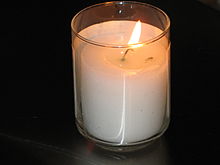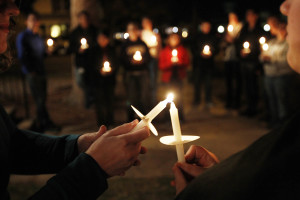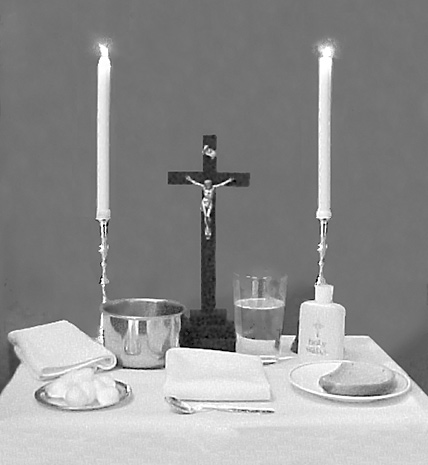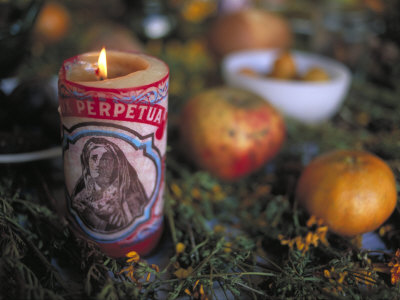The first known use of a candle dates to China in 206 BC. Thus, it’s no wonder that candles in the home have retained a strong role in both cultural and religious observances for those who are dying or who have died. The Catholics use “Blessed Candles” as a sacred, one-time ritual; each Jewish home lights a “Yahrzeit (memorial) candle” on the anniversary of the death each year. In Mexico, those who have died are remembered on a national holiday each year that takes place over a three day period of celebration. During the above Mexican tradition, a religious candle is typically placed in a home altar to honor the loved one who has departed.
While we once depended on candles as our only source of light in the dark, today they’re used for their beauty, becoming a representation of mystery and “meaning”. Is there anything more primal than shadows dancing to the flickering of a candle’s flame? Today, I explore the significance of candles in our end-of-life rituals through three examples of how candles play an important role in various cultures, although many more examples exist around the world.
Blessed Candles: The Catholics have used them for many generations. Firstly, the candles must be made of beeswax. More specifically, the “blessed” candles are used only when sickness enters a home or when a death is imminent. Receiving the candle is seen as an act of faith in Christ. Ritual dictates that the face, hands and feet of the ill person be washed. A two foot square table or stand should have a white cover with a crucifix placed on top of it. Two blessed candles are also added and lit in anticipation of the priest’s arrival. The belief is that “To each of us shall come the time when our bodies shall breathe no longer and our souls shall stand in Eternal Judgement. When this time arrives it should be our prayerful hope that shall be benefited with the last rites of the Church.”

Yahrzeit candle
(Credit: wikipedia.org)
Yahrzeit Candles: In Jewish tradition, a yahrzeit candle is lit (minhag) each year at sunset on the day before the anniversary of a death. A family can choose to do as they wish at the lighting; just spend time together remembering stories, sit in silent introspection or recite various psalms. The candle burns for 24 hours in remembrance. Typically, there is only one candle, but some families like to have a personal candle for each family member. Any kind of candle may be used. The flicker of the flame is believed to be the soul of the departed loved one, which represents how fragile our lives are.
Day of The Dead Candles: On first appearance, the annual holiday, Day of the Dead (or Dia De Los Muertos), may seem like our own US Halloween, but the holiday is actually rooted in quite the opposite direction. It exists not to cultivate a fear of “spirits”, but to happily embrace and pay respect to family members who are gone. For Day of the Dead, an altar is erected in the home in memory of the dead loved one. Then, a candle is traditionally placed on the altar, often a religious one. Additionally, other traditional symbolic items, as well as favorite personal items of the dead, are included. Common personal items may include: a photo of the person or things that the person loved to do for pleasure, like drink a certain beer or play a musical instrument. Traditionally, a small pinch of salt, incense or various fragrances are on the altar as well — a way to help the dead spice up their (after)lives.

 Candles Used in Both Death and Dying
Candles Used in Both Death and Dying






 Meaning-Focused Grief Therapy: Imaginal Dialogues with the Deceased
Meaning-Focused Grief Therapy: Imaginal Dialogues with the Deceased
 Flawed Kidney Function Test Discriminated Against Black Patients
Flawed Kidney Function Test Discriminated Against Black Patients














